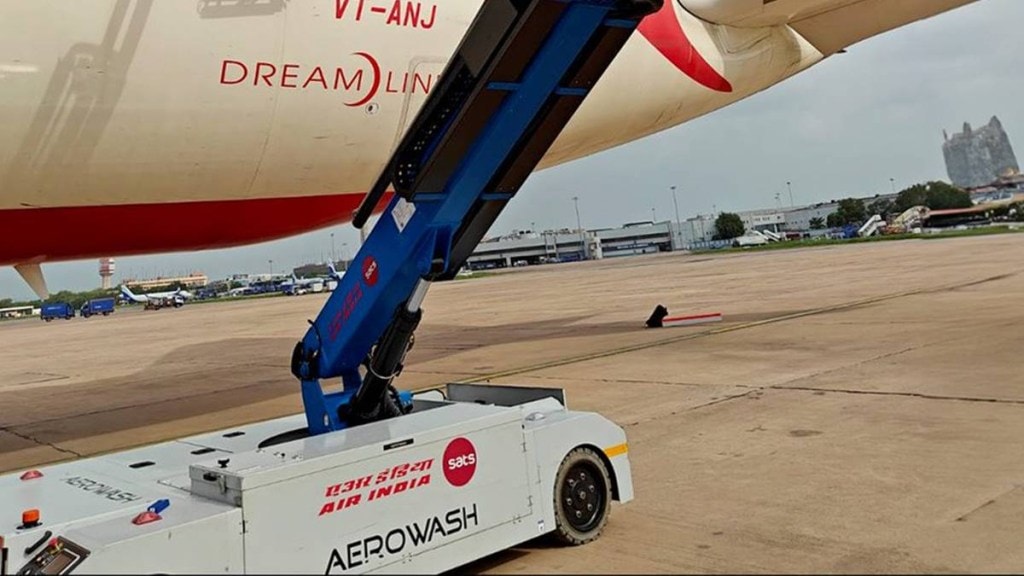Air India announced the implementation of an automated aircraft exterior washing and cleaning system, named ‘Aerowash,’ designed to conserve significant amounts of water. This innovative system incorporates advanced features for efficient cleaning, saving water and costs. Let us know more about the ‘Aerowash’ method.
What is this ‘Aerowash’ method?
The Aerowash system incorporates modern features like a robotic micro-fiber brush drum, enabling the cleaning of planes with minimal water usage. The airline estimates that this technology can save up to 75,000 liters of water annually for each wide-body aircraft. In the case of narrow-body aircraft, the water savings are projected to be around 30,000 liters per aircraft per year.
Traditional aircraft cleaning methods required huge amount of water. The advancements in technology now allow for more water-efficient cleaning processes. Depending on the aircraft’s size, Air India anticipates annual water savings of up to 75,000 liters (almost 20,000 gallons) for a single widebody aircraft and 30,000 liters (almost 8,000 gallons) for narrowbody planes.
Air India is following in the footsteps of Vistara, which was the pioneer among Indian carriers in adopting water-saving technology for aircraft cleaning. Vistara has been utilizing the Aerowash system, making it the first in the country to do so. The introduction of this innovative cleaning method in India was a collaborative effort between Air India SATS (AISATS), a prominent airport services management company, and AeroTech Support Services Pvt. Ltd.
Beyond water conservation, the Aerowash technology also enhances time efficiency by reducing the ground time for aircraft. Additionally, the process requires minimal human involvement, leading to potential cost savings for airlines.
Sustainable practices and green energy
Against the backdrop of a global aviation sector emphasising sustainable practices and green energy, the adoption of technologies like Aerowash aligns with expectations. In line with this commitment, India has put forth several proposals to contribute to environmental conservation.
Addressing the aviation industry’s carbon footprint, Civil Aviation Minister Jyotiraditya Scindia, has unveiled plans for more than 90 airports in the country to achieve carbon neutrality by 2024. Leading the charge are airports like Delhi and Kochi, with Delhi aiming to replace all conventional fuel-dependent airside vehicles with electric vehicles (EV), while Kochi proudly holds the distinction of being the world’s first airport, back in 2015, to meet all its energy needs through solar power.
Airlines are also increasingly embracing eco-conscious practices. For instance, Akasa Air has designed crew uniforms using recycled polyester fabric sourced from PET bottles retrieved from marine waste. Air India has taken steps such as eliminating 500ml plastic water bottles from all economy class seat pockets on widebody aircraft operating international flights and and introducing 100% compostable waste bags as part of their eco-friendly initiatives.

